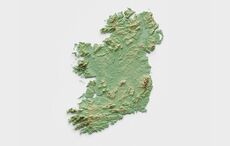Irish police are looking for a group of vandals who broke into Glasnevin Cemetery and smashed a memorial wall that commemorates the Irish War of Independence.
The controversial memorial necrology wall, which includes the names of British soldiers who died in the 1916 Easter Rising and the Irish War of Independence, was targeted with sledgehammers and paint, according to Gardaí.
The incident is believed to have occurred at around 3:45 am on Tuesday, February 4.
The suspects used the sledgehammer to remove the names of the British soldiers commemorated on the wall, but the Irish Times reports that they inadvertently damaged the names of Irish revolutionaries.
Gardaí are hopeful that CCTV footage from the incident will shed light on the suspect's identities.
A Garda spokesman said: “Significant damage was caused to the stonework of the memorial plaque and it had also been defaced with paint. Garda inquiries are continuing and the investigation is ongoing.”
Vandals also attacked the monument in April 2017 by throwing paint over it.
Read More: Police investigate “callous vandalism” of 1916 Glasnevin memorial wall
While the memorial wall has been criticized for commemorating members of the British army, its intention is to remember those who died in the war “based on historical fact, without judgment or hierarchy. Each will be free to take from the wall what they wish," according to Glasnevin Trust Chairman John Green.
The most recent incident took place less than a month after the Irish Government canceled plans to host a commemoration ceremony for members of the Royal Irish Constabulary (RIC) and Dublin Metropolitan Police who were killed in the War of Independence.
The event, which was scheduled to take place in Dublin Castle in January, was subject to widespread ridicule from members of the public and opposition parties alike.
The RIC was a police force in Ireland during the War of Independence and was often supplemented by the much-maligned Black and Tans, an auxiliary force renowned for its brutality in 1920s Ireland.
Read More: Dublin’s Glasnevin Cemetery held its first burial on this day in 1832




Comments